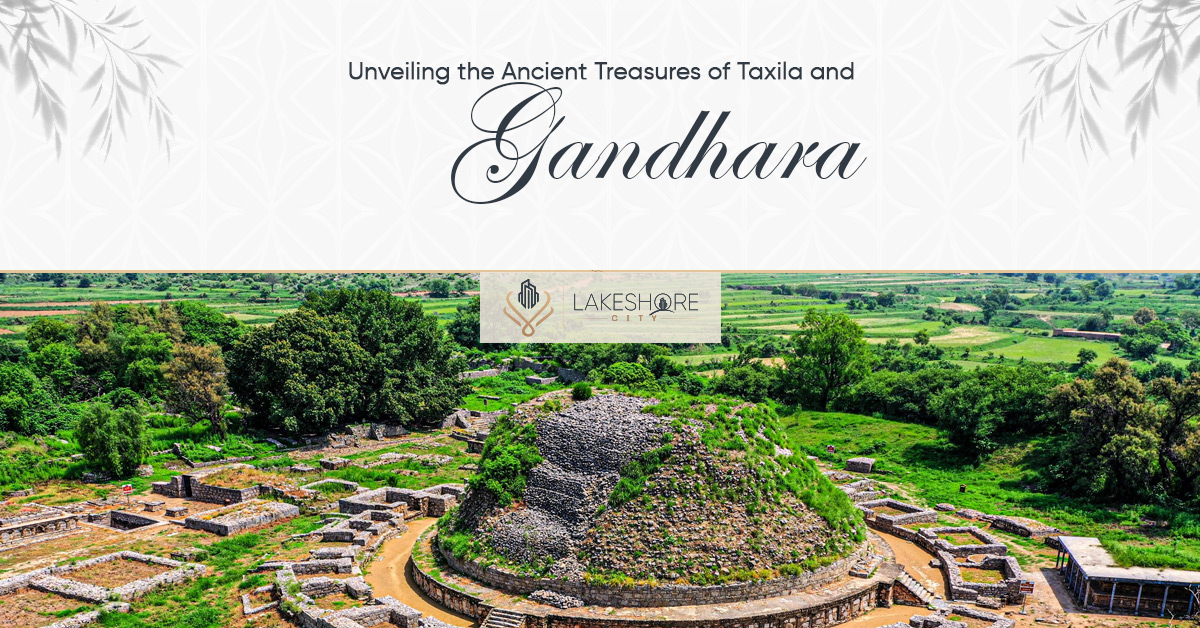Sirkap Remains
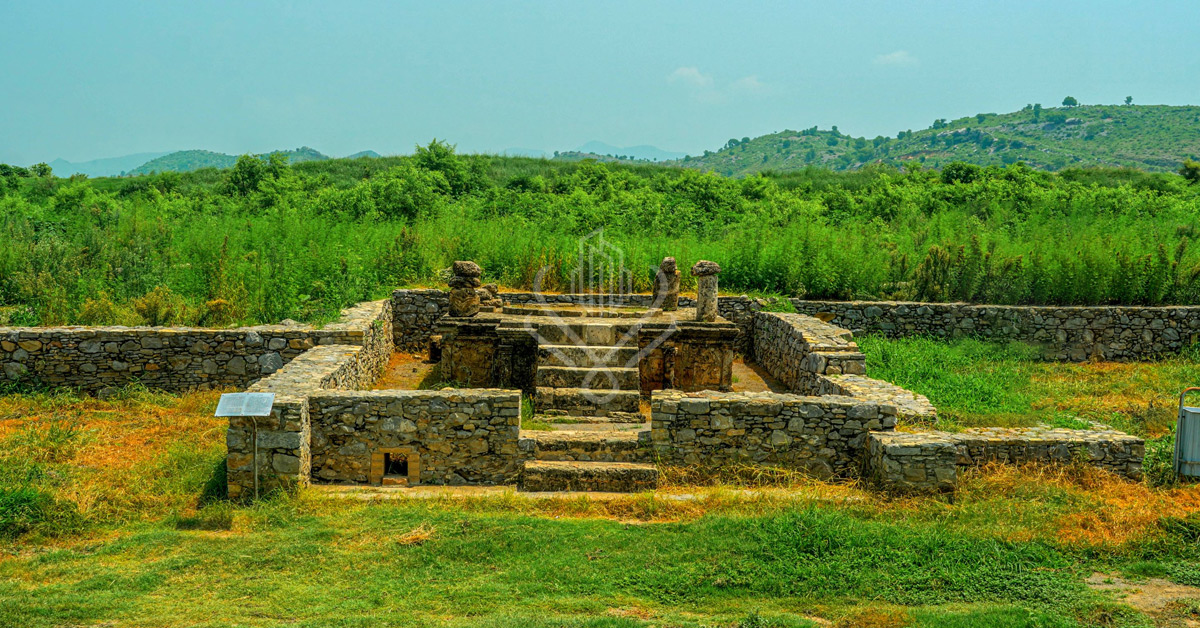
It is believed that the Bactrian Greeks formally founded the second ancient city of Sirkap in the second century BC. The city has been credited to the Greeks due to a number of urban planning elements in addition to the archaeological remains. A few significant locations are the Royal Residence, Sun The Jain Temple, the Apsidal Temple, and the Double-Headed Eagle Stupa Temple.
Taxila Museum
For centuries, Taxila served as the center of Buddhism, a hub for learning, a bustling metropolis, and a crossroads for a number of different cultures, including the Achaemenids, Greeks, Mauryans, Scythians, Parthians, Kushans, Huns, and eventually the Muslims. About 30 kilometers to the north of Islamabad, in the Punjabi province, is Taxila. The 18 sites that make up the archaeological region of Taxila have significant cultural value and were all included under the UNESCO World Heritage List in 1980.
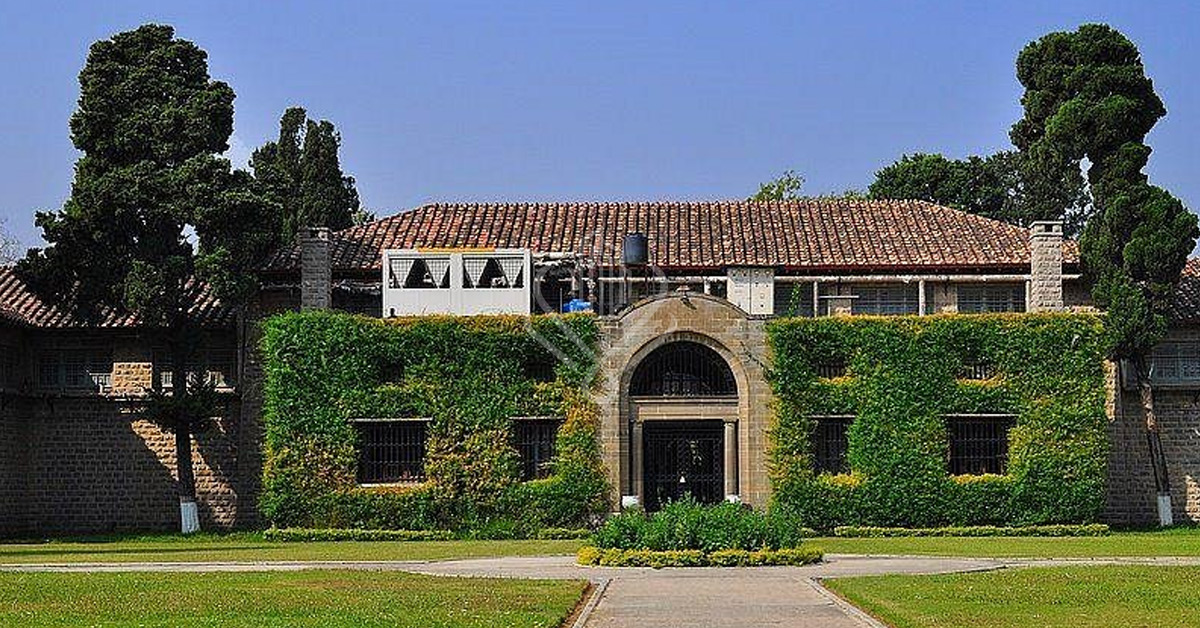
Especially after Ashoka’s reign and during the Kushan era in the first century, the city of Taxila was a well-known Buddhist site in Gandhara. The Gandhara Valley Civilization was a civilization that flourished in this region during the Buddhist era.
Dharmarajika Stupa & Monastery

This is the largest Buddhist establishment in the Taxila region, dating back to the reign of Ashoka, the great Mauryan emperor who united India in the third century BC. The site itself is associated with the name Dharmaraj, which is also mentioned in some Buddhist sources. The majority of academics firmly believe that Dharmarajika is a relic depository stupa since it is one of the places where the Buddha’s remains were interred.
Bhir Mound
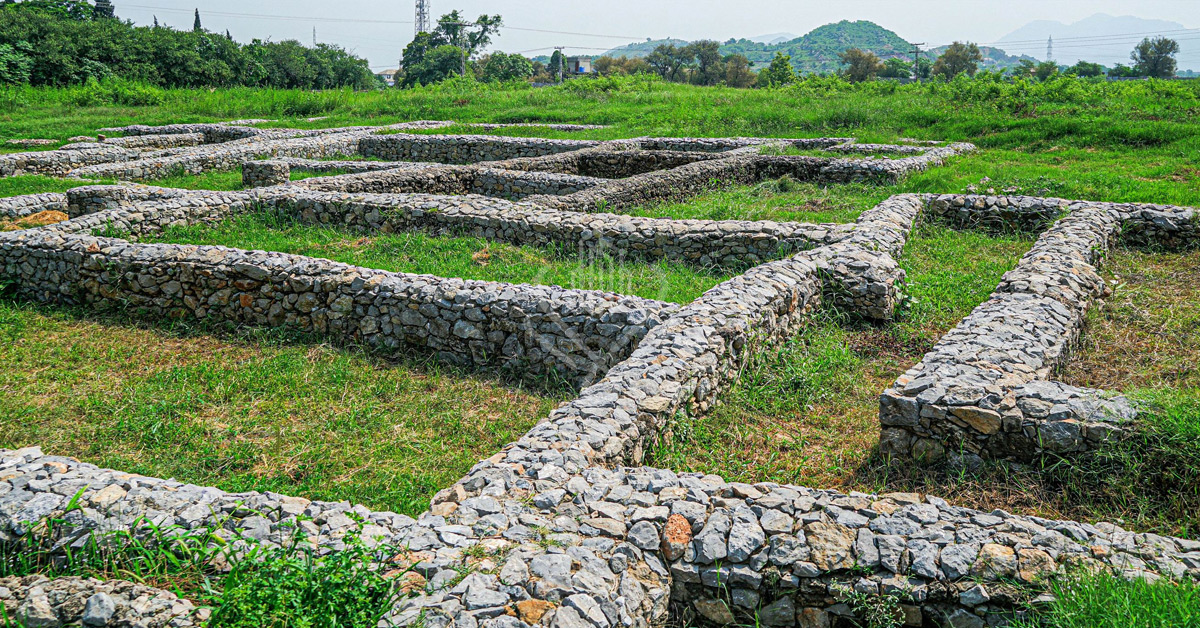
The first city’s archaeological remains are located south of the current Taxila Museum. They span an area of about 1200 by 730 yards and are divided into 4 levels, with the oldest levels dating from the Indo/Bactrian Greek period in the 2nd century BC to the Achaemenid period in the 5th and 6th century BC.
Manikiala Stupa
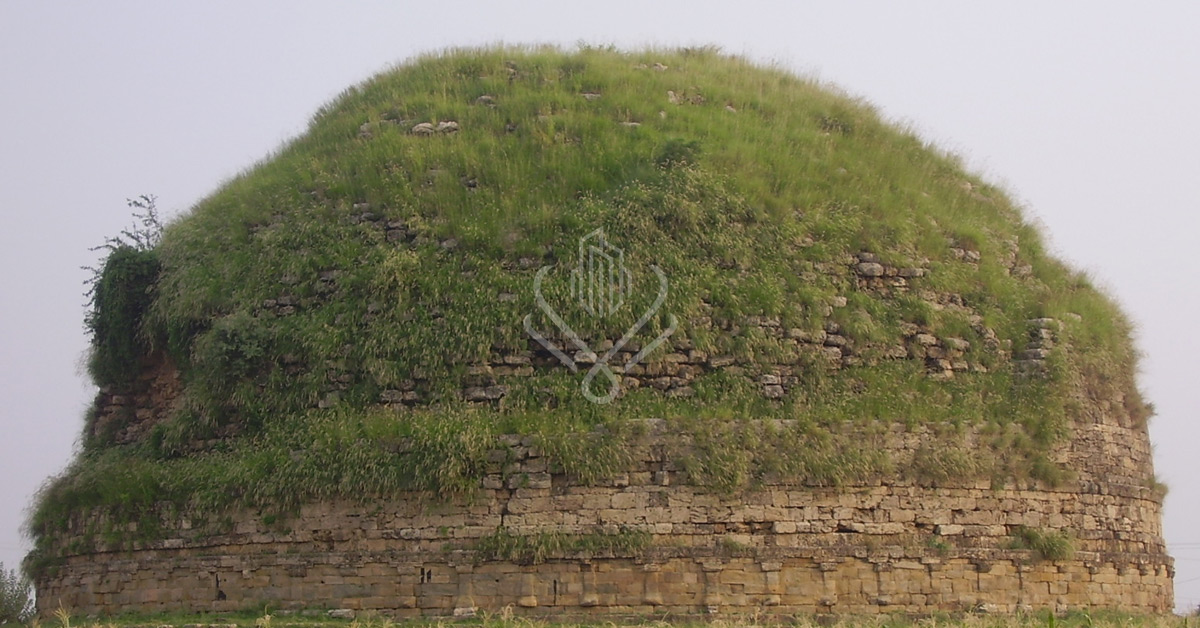
In the Punjabi province, close to the village of Tope Mankiala, is the Mankiala Stupa, a Buddhist shrine dating back to the second century. The stupa was constructed to honor the location where, in the stories found in the Jataka, Prince Sattva, an incarnation of the Buddha, gave his life to feed seven tiger cubs who were in need of food.
Ban Faqiran Stupa
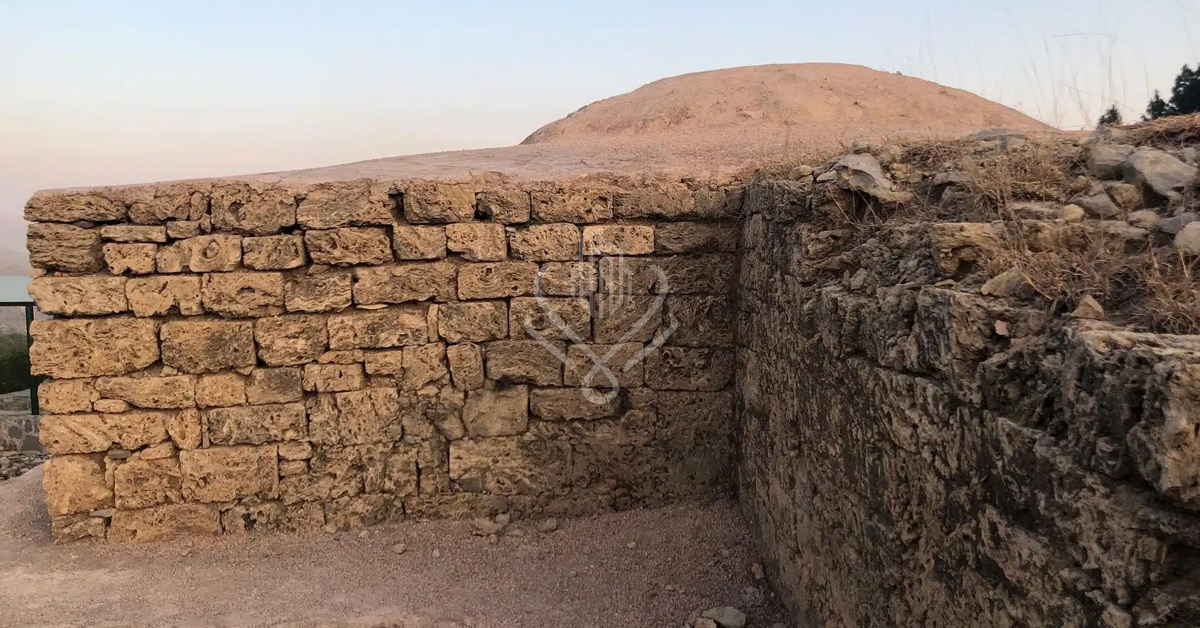
Perched atop the Margalla Hills, Ban Faqiran is the oldest historical site in Islamabad. Ban Faqiran’s archeological remnants span the second through the fifth centuries. It was believed that the Ban Faqiran complex was a watchtower, situated approximately two kilometers away from the Buddhist caves in Shah Allah Ditta.
Mostly visited by pilgrims, the Ban Faqiran stupa marked the route to the 3 BC Dharmarajika monastery, which held some of the remains of Lord Buddha. Dharmarajika, a world heritage site visible from Ban Faqiran, situated approximately 2.5 kilometers away in the Taxila Valley, was constructed by the Maurayan King Ashoka.
Ashoka Rock Edicts
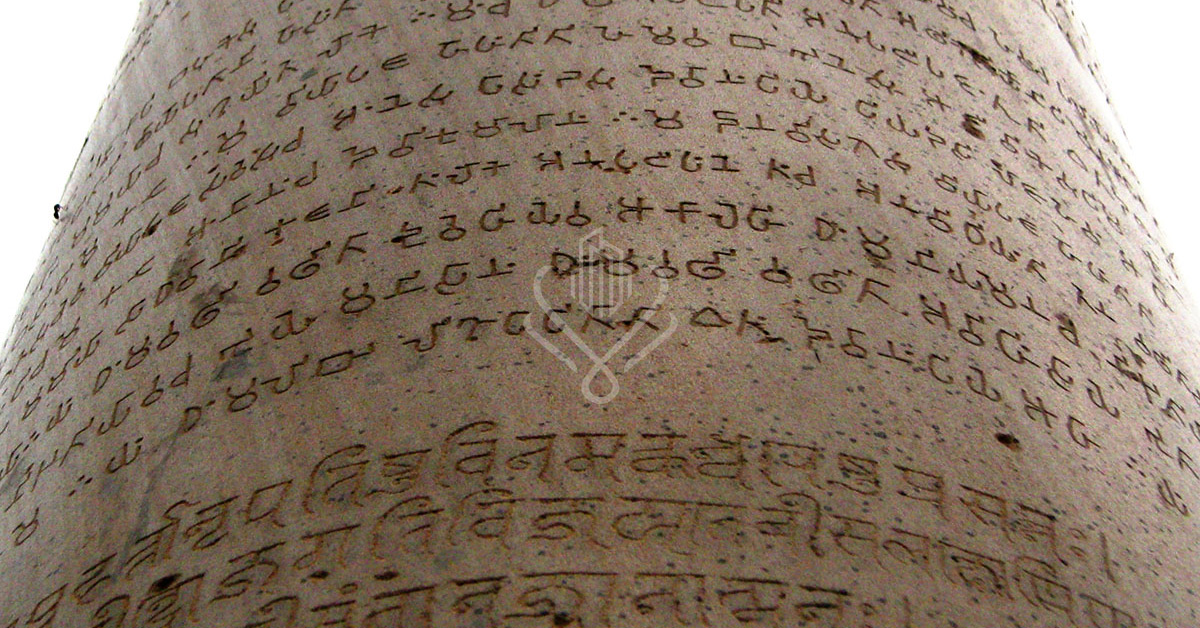
Ashoka once felt deep regret for the suffering he had caused to a city in 260 B.C. while expanding his empire. He issued a number of edicts with the intention of ending suffering throughout his empire, instructing his governors to post them prominently. There were fourteen decrees issued, and seven different versions were carved on large boulders all over the empire sometime after 257 B.C.
In Gandhara are the two most complete versions that have survived. One is on naturally occurring boulders close to Shahbazgarhi, 16 km east of Mardan; the other is on three boulders on the Mansehra outskirts, 30 km north of Abbottabad, east of the Indus River.
Mansehra Rock Carving
The fourteen edicts of Ashoka, the Mauryan emperor, are written on rocks in Mansehra, Khyber Pakhtunkhwa. The edicts, which are written in the ancient Kharosthi script of Gandhara culture, are divided into three sections and date to the third century BC. Ashoka’s dharma is mentioned in some of the edicts. The site is presently on the tentative list after being submitted for inclusion in the World Heritage Sites.
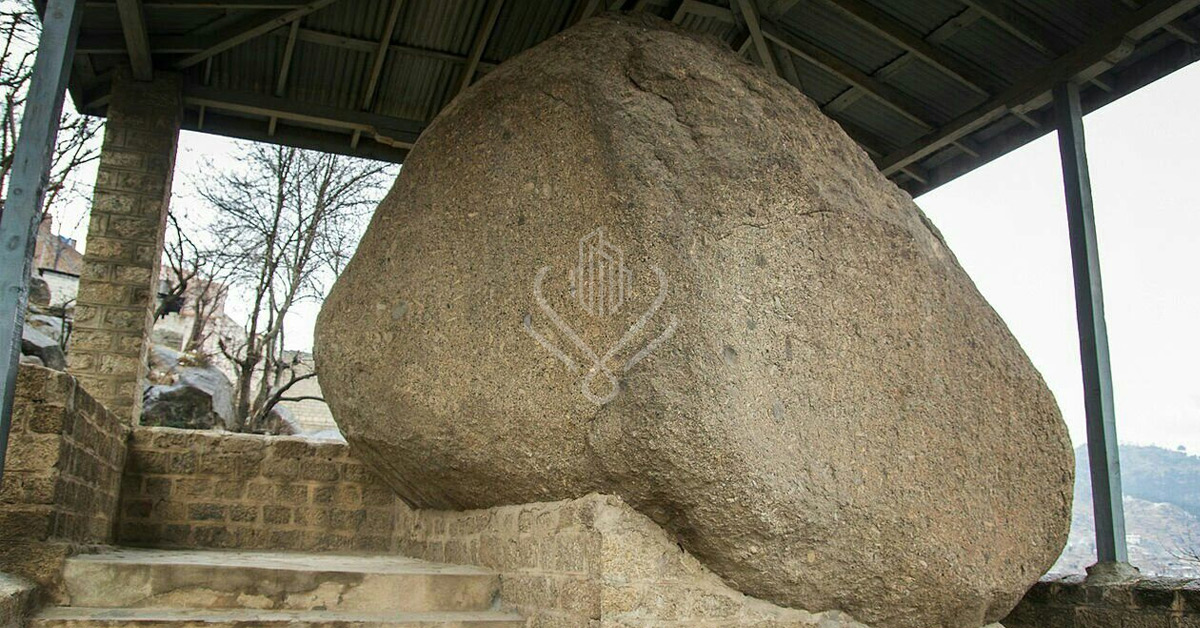
Situated on the historic Silk Road, the location is close to the Karakoram Highway. One of Ashoka’s 33 inscriptions that describe the spread of Buddhism and his Law of Piety, or dharma, is found on the Mansehra Rock Edicts. The text of the fourteen edicts is written in the historic Kharosthi script, which is still in use in the Gandhara.
Shatial Rock Carving
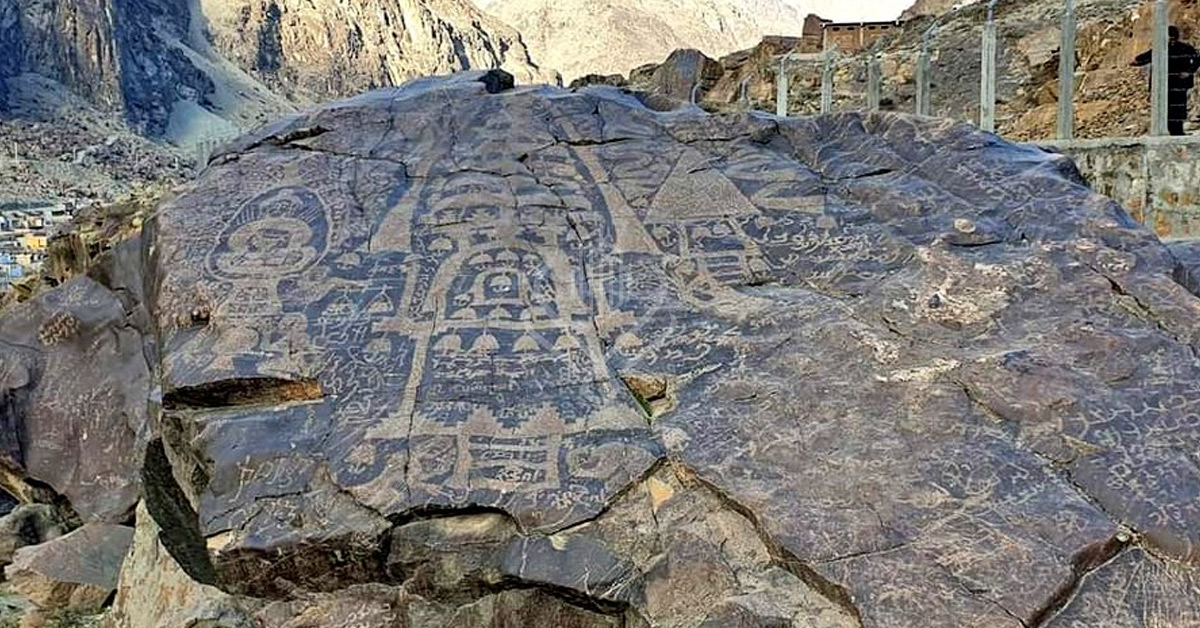
Shatial is a small town on the Karakorum Highway (KKH) that is administratively in Khyber-Pakhtunkhwa’s Upper Kohistan district. The region is well-known for its hundreds of ancient scripts, particularly Kharosthi, Sogdian, Brahmi, and others, as well as its Buddhist and Zoroastrian symbolism. From this location, some Chinese inscriptions were also recorded. The face of the boulder is covered in an enormous stupa engraving, which is bordered by a few votive stupas. There is a fifth-century AD Kharosthi inscription next to the enormous stupa. The stupa’s artist is identified as the “religiously devout daughter of Jikhodarkha” in the inscription.
Chillas Rock Carving
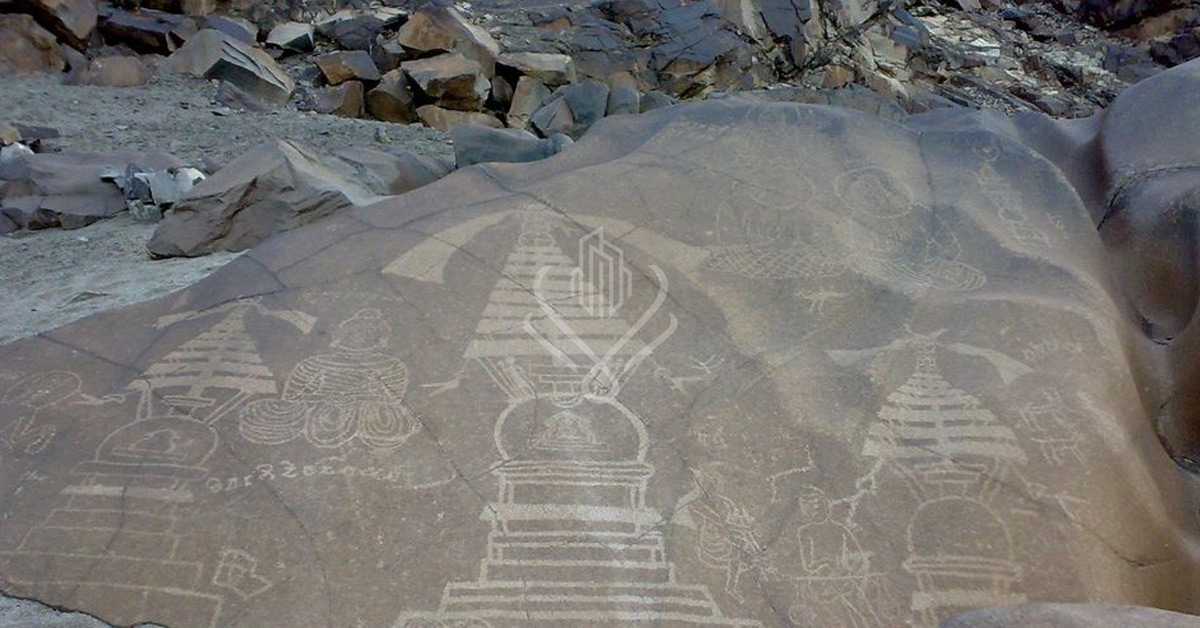
Concentrated at ten major sites between Hunza and Shatial, the over 50,000 Buddhist rock art pieces (petroglyphs) and inscriptions along the Karakoram Highway in Gilgit-Baltistan. Along the trade route, the carvings were left by a variety of invaders, traders, and pilgrims in addition to the locals. The oldest are thought to be from 5000–1000 BC. It appears likely that Chilas were a part of the former Kamboja kingdom.
Kargah Buddha
An archaeological site called Kargah Buddha is situated 9.7 kilometers outside of Gilgit. This enormous standing Buddha sculpture, which is about 50 feet high, is carved into the side of a cliff in Kargah Nala. The carving is most likely from the seventh century and is in a style that is also present in Baltistan.
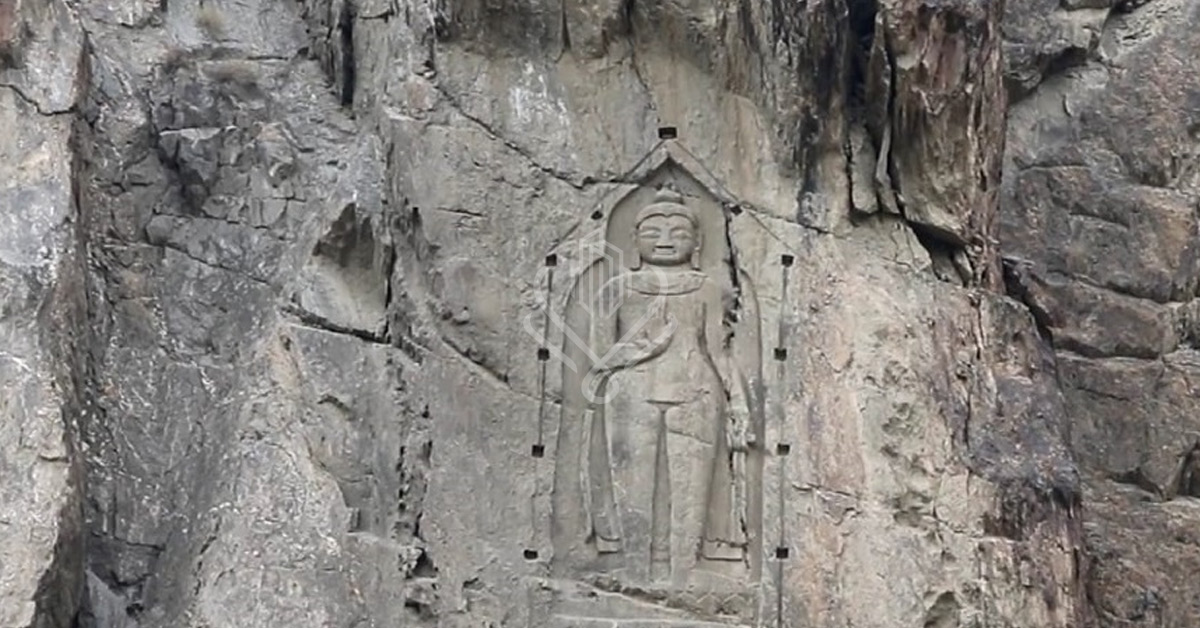
Buddhism was centered in Gilgit from the third to the eleventh century. In 1931, three stupas containing Sanskrit manuscripts and a Buddhist monastery were excavated in the vicinity, approximately 400 meters (1,300 feet) upstream.
The carving’s completion is thought to have occurred in the seventh century. Following the invention of purported Gilgit manuscripts in 1931, it was found in 1938–1939.
Manthal Buddha Rock
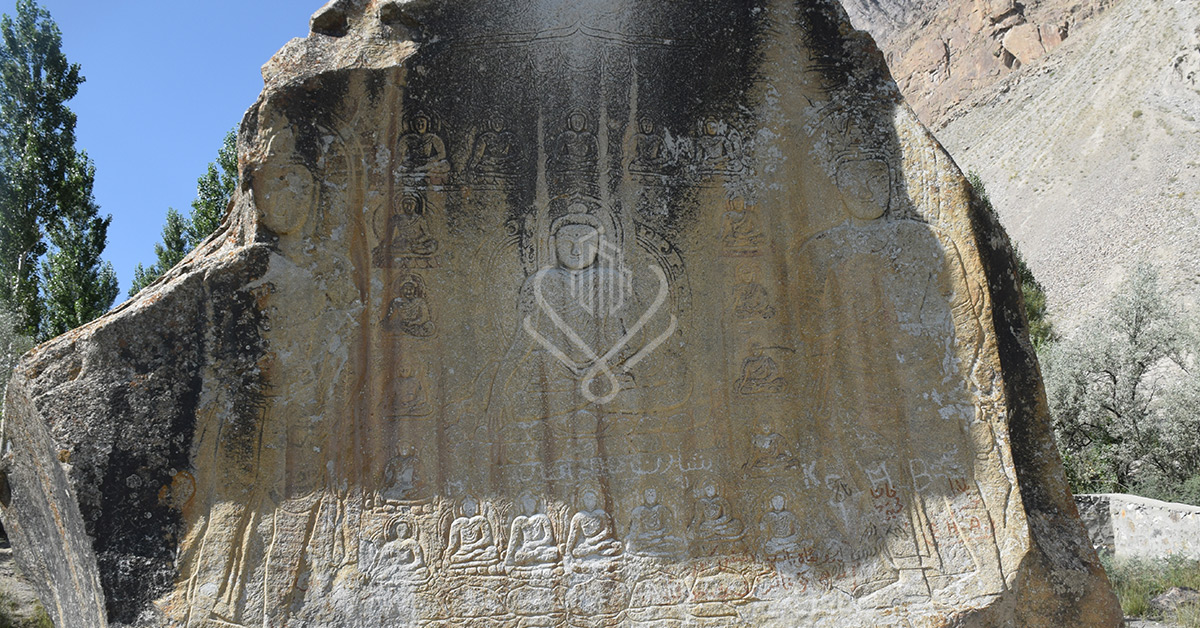
Manthal Buddha Rock is a massive granite boulder that has an 8th-century engraving of the Buddha on it. This rock can be found in Gilgit Baltistan’s Manthal village in Skardu Town. One of the most significant Buddhist relics in Skardu is Buddha Rock. The main Sadpara Road is not too far away from it. Because of its remote location, the world did not become aware of this Buddha carving until the early 1900s.
The carving gained international attention when Scottish traveler Ella Christie included it in her book from 1906 about her trip to Western Tibet.
Conclusion
In conclusion, the historical and archaeological landscape of the Taxila region, embedded in the rich tapestry of ancient Gandhara, offers a captivating journey through time. The remnants of Sirkap, attributed to the Bactrian Greeks, showcase the city’s urban planning prowess, while the Taxila Museum preserves the cultural amalgamation that characterized the city’s zenith. Dharmarajika Stupa stands as a testament to the deep-rooted Buddhist heritage, with links to Ashoka’s reign.
The diverse array of sites, including Bhir Mound, Manikiala Stupa, Ban Faqiran Stupa, and Ashoka Rock Edicts, unveils the city’s multifaceted history, from Indo/Bactrian Greek periods to the Mauryan era. Moving beyond Taxila, the Mansehra and Shatial Rock Carvings, along with the Chilas Rock Carvings, unfold the spread of Buddhism and Ashoka’s dharma, offering insights into the socio-cultural dynamics of the region.
Further north, the colossal Kargah Buddha and the enigmatic Manthal Buddha Rock stand as towering symbols of Buddhist artistry, echoing the spiritual significance that once reverberated through the valleys of Gilgit. Collectively, these sites narrate a compelling story of cross-cultural interactions, the evolution of Buddhism, and the enduring legacy of ancient civilizations in the heart of South Asia.
FAQs
Q1: When was the second ancient city of Sirkap founded, and by whom?
Ans: Sirkap was believed to be formally founded in the second century BC by the Bactrian Greeks.
Q2: What are some significant locations in Sirkap’s archaeological remains?
Ans: Some significant locations include the Royal Residence, Sun The Jain Temple, the Apsidal Temple, the Double-Headed Eagle Stupa, and The Temple.
Q3: Why is Taxila considered a cultural hub with diverse influences?
Ans: Taxila served as a crossroads for various cultures, including the Achaemenids, Greeks, Mauryans, Scythians, Parthians, Kushans, Huns, and Muslims.
Q4: Which Buddhist site in Taxila is associated with Ashoka’s reign and believed to house relics of Lord Buddha?
Ans: Dharmarajika Stupa & Monastery is associated with Ashoka’s reign and is believed to be a relic depository stupa.
Q5: Where is the archaeological site Bhir Mound located, and what historical periods does it span?
Ans: Bhir Mound is located south of the Taxila Museum and spans from the Indo/Bactrian Greek period in the 2nd century BC to the Achaemenid period in the 5th and 6th centuries BC.
Q6: What story is associated with the construction of the Manikiala Stupa, and where is it located?
Ans: The Manikiala Stupa was constructed to honor the location where Prince Sattva, an incarnation of Buddha, gave his life to feed seven tiger cubs. It is located in the Punjabi province.
Q7: What is the historical significance of Ban Faqiran Stupa in Islamabad?
Ans: Ban Faqiran Stupa, believed to be a watchtower, marked the route to the 3 BC Dharmarajika monastery and served as a pilgrimage site.
Q8: How did Ashoka address the suffering caused during the expansion of his empire, and where are the most complete versions of his edicts found?
Ans: Ashoka issued fourteen edicts to end suffering, with the two most complete versions found in Gandhara, near Shahbazgarhi and on the Mansehra outskirts.
Q9: What is the historical significance of the Mansehra Rock Carving, and what script is used in the edicts?
Ans: The Mansehra Rock Carving contains the fourteen edicts of Ashoka in the ancient Kharosthi script of Gandhara culture, dating back to the third century BC.
Q10: Where is the Kargah Buddha located, and what does it represent in terms of Buddhist artistry?
Ans: The Kargah Buddha is located 9.7 kilometers outside of Gilgit and represents a massive standing Buddha sculpture carved into a cliff in Kargah Nala, dating back to the seventh century.
Our Featured Article:
Read More: Pakistan Attracted $16 Billion in Visitor Spending in 2022
Don’t miss the chance to invest with Lakeshore! Secure your investment today by investing your financial investment with Lakeshore in the following available options like Lakeshore City, Lakeshore Club, and Lakeshore Farms.
For More updates, please Contact +92 335 7775253 or visit our website https://lakeshorecity.com/
Lakeshore City is the upcoming elite lifestyle at Khanpur Dam. Offering no parallel amenities for the members and owners of distinguished farmhouses.
Become Part of Luxurious Lifestyle
Contact: 0335 7775253


